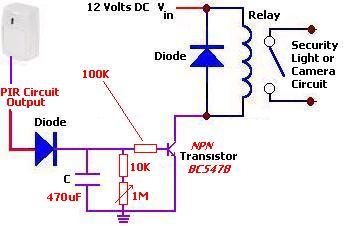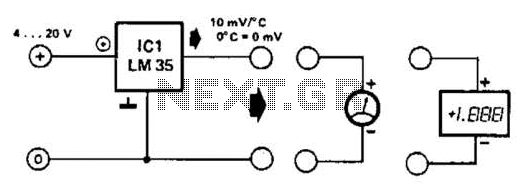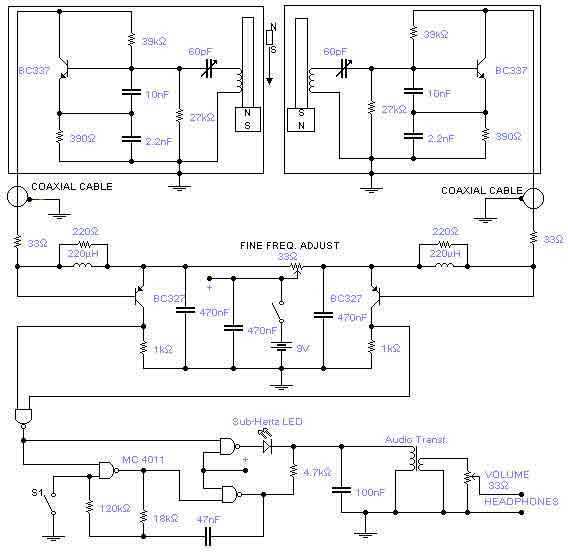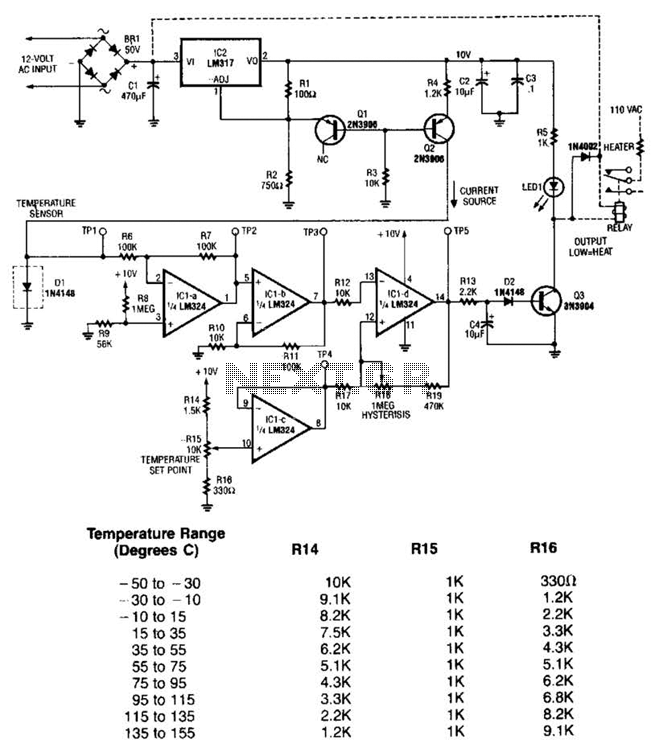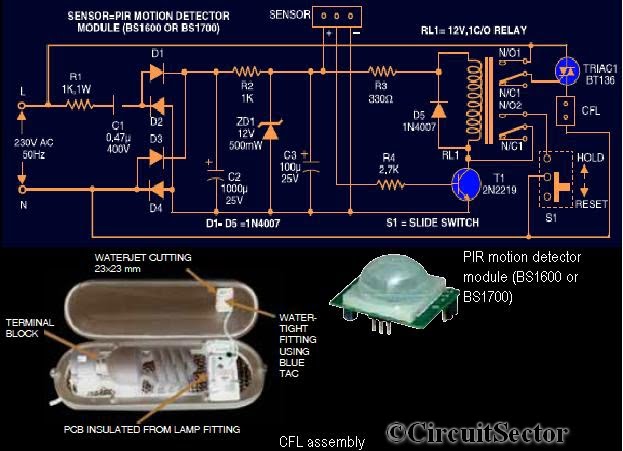
WIND DIRECTION SENSOR

To utilize the circuit, a wind vane similar to the one illustrated is required. It must feature a weighted front end and an air paddle at the rear. A small, strong magnet should be affixed to the front section of the wind vane arm. Subsequently, eight reed magnetic switches need to be arranged in a circular formation around a plastic pipe and connected electrically.
The described circuit operates based on the principles of wind direction measurement. The wind vane, which is designed to pivot according to wind direction, is equipped with a magnet that activates the reed switches. The placement of the eight reed switches in a circular arrangement allows for precise detection of the wind direction by determining which switch is activated by the magnet as the vane rotates.
Each reed switch is a magnetic sensor that closes its contacts in the presence of a magnetic field. As the wind vane turns, the magnet on the vane arm will sequentially activate the reed switches, providing a digital signal corresponding to the specific direction of the wind. This configuration can be particularly useful in applications such as meteorological stations, automated weather monitoring systems, or any project requiring wind direction data.
The electrical connections should ensure that each reed switch is appropriately wired to a microcontroller or an indicator circuit, allowing for easy interpretation of the wind direction data. The output can be processed to display the wind direction in degrees or as a directional indicator, enhancing the functionality of the circuit. Proper calibration of the system may be necessary to ensure accuracy, taking into account the physical layout and spacing of the reed switches relative to the wind vane's movement.To use the circuit you will need a wind vane like the one shown. It should have a weighted front end and an air paddle in the rear. Attach a small, strong magnet to the front part of the wind-vane arm. Then, position eight reed magnetic switches in a circle around a piece of plastic pipe and electrically connect them (as shown). Note that the reed switches a.. 🔗 External reference
The described circuit operates based on the principles of wind direction measurement. The wind vane, which is designed to pivot according to wind direction, is equipped with a magnet that activates the reed switches. The placement of the eight reed switches in a circular arrangement allows for precise detection of the wind direction by determining which switch is activated by the magnet as the vane rotates.
Each reed switch is a magnetic sensor that closes its contacts in the presence of a magnetic field. As the wind vane turns, the magnet on the vane arm will sequentially activate the reed switches, providing a digital signal corresponding to the specific direction of the wind. This configuration can be particularly useful in applications such as meteorological stations, automated weather monitoring systems, or any project requiring wind direction data.
The electrical connections should ensure that each reed switch is appropriately wired to a microcontroller or an indicator circuit, allowing for easy interpretation of the wind direction data. The output can be processed to display the wind direction in degrees or as a directional indicator, enhancing the functionality of the circuit. Proper calibration of the system may be necessary to ensure accuracy, taking into account the physical layout and spacing of the reed switches relative to the wind vane's movement.To use the circuit you will need a wind vane like the one shown. It should have a weighted front end and an air paddle in the rear. Attach a small, strong magnet to the front part of the wind-vane arm. Then, position eight reed magnetic switches in a circle around a piece of plastic pipe and electrically connect them (as shown). Note that the reed switches a.. 🔗 External reference
